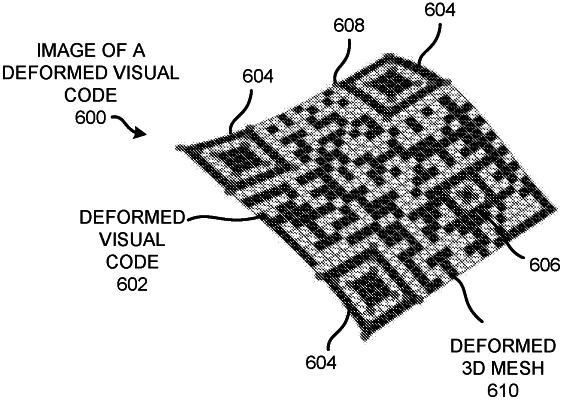| CPC G06K 19/06037 (2013.01) [G06K 1/121 (2013.01); G06K 7/1443 (2013.01); G06K 7/1491 (2013.01); G06K 19/06075 (2013.01)] | 20 Claims |

|
1. An apparatus comprising:
a processor; and
a non-transitory computer readable medium on which is stored instructions that when executed by the processor, are to cause the processor to:
create a two-dimensional (2D) reference mesh for an image of a curved visual mark;
establish correspondences between finder pattern points in the curved visual mark and points of the 2D reference mesh;
determine a curved three-dimensional (3D) mesh having a radius that results in a minimal reprojection error of a projective transform estimated for correspondences between the 2D reference mesh and the curved 3D mesh while the radius remains below a predefined upper limit;
sample components of the curved visual mark in elements of the determined curved 3D mesh to form a 2D planar image of the curved visual mark; and
analyze the 2D planar image of the curved visual mark to read the curved visual mark.
|